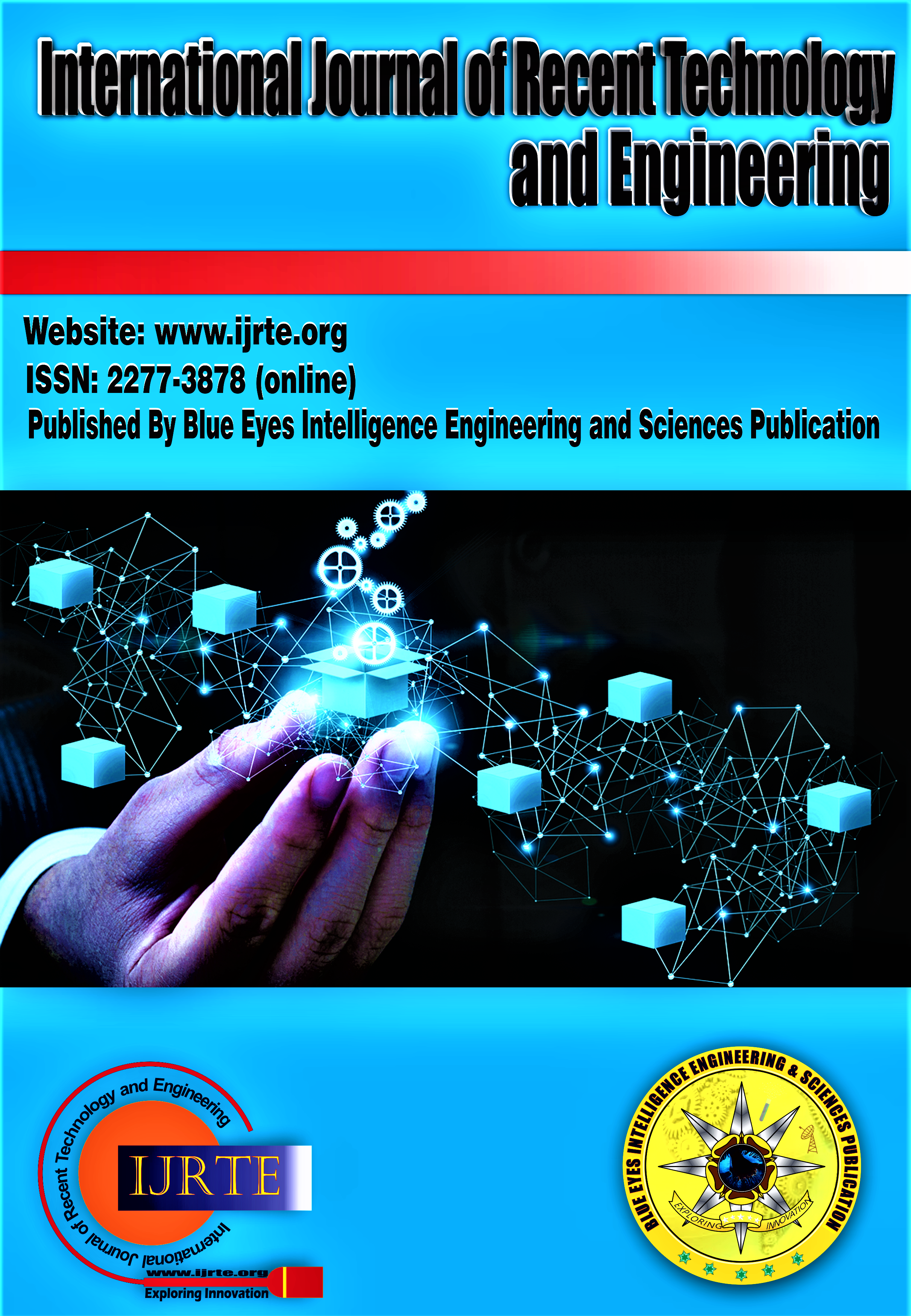Efficient Slice Creation in Network Slicing using K-Prototype Clustering and Context-Aware Slice Selection for Service Provisioning
Main Article Content
Abstract
The advent of 5G technology has ushered in a new era of communication where the customization of network services is crucial to meet diverse user demands. Network slicing has emerged as a pivotal technology to achieve this customization. In this research, we present an innovative approach to optimize network slicing in 5G by employing K-Prototype Clustering for slice creation and Context-Aware Slice Selection for efficient resource allocation. In slice creation, we delve into the innovative application of the K-Prototype clustering algorithm. Recognizing that 5G networks encompass numerical and categorical attributes, the K-Prototype algorithm enables the creation of network slices that cater to diverse service requirements. By harnessing this clustering technique, our proposed method optimizes the creation of network slices, resulting in improved resource utilization and reduced network congestion. Furthermore, we introduce the concept of Context-Aware Slice Selection, which considers the dynamic and evolving nature of network demands. Context-awareness ensures that network slices are selected based on real-time contextual information, enabling a more adaptive and responsive network. This approach leads to the efficient allocation of resources and a higher quality of service for end-users. To evaluate the performance of our proposed methodology, we employ key performance metrics, including slice selection accuracy, slice selection delay, and radio link failure. Through comprehensive testing and analysis, our research demonstrates that our approach consistently outperforms existing methods in terms of these metrics.
Downloads
Article Details
Section

This work is licensed under a Creative Commons Attribution-NonCommercial-NoDerivatives 4.0 International License.
How to Cite
References
Afra Domeke, Bruno Cimoli and Idelfonso Tafur Monroy, “Integration of Network Slicing and Machine Learning into Edge
Networks for Low-Latency Services in 5G and beyond Systems”, Applied Sciences, Jun 2022. https://doi.org/10.3390/app12136617
Randeep Singh, Abolfazl Mehbodniya, Julian L. Webber, Pankaj Dadheech, G. Pavithra, Mohammed S. Alzaidi, and Reynah Akwafo,
“Analysis of Network Slicing for Management of 5G Networks Using Machine Learning Techniques”, Wireless Communications and
Mobile Computing, Jun 2022. https://doi.org/10.1155/2022/9169568
Hnin Pann Phyu, Diala Naboulsi, Razvan Stanica, “Machine Learning in Network Slicing - A Survey”, TechRxiv. Preprint..
https://doi.org/10.36227/techrxiv.21552105.v14. M. Ahmadinejad, T. Azmin and N. Shahriar, "5G Network Slice Type Classification using Traditional and Incremental Learning," NOMS 2023-2023 IEEE/IFIP Network Operations and Management Symposium, Miami, FL, USA, 2023.
https://doi.org/10.1109/NOMS56928.2023.10154385
W. Jiang, S. D. Anton and H. Dieter Schotten, "Intelligence Slicing: A Unified Framework to Integrate Artificial Intelligence into 5G
Networks," 2019 12th IFIP Wireless and Mobile Networking Conference (WMNC), Paris, France, 2019.https://doi.org/10.23919/WMNC.2019.8881402
Sulaiman Khan, Suleman Khan, Yasir Ali, Muhammad Khalid, Zahid Ullah, Shahid Mumtaz, “Highly Accurate and Reliable Wireless
Network Slicing in 5th Generation Networks: A Hybrid Deep Learning Approach”, Journal of Network and Systems Management,
Jan 2022,
H. Chergui and C. Verikoukis, "Big Data for 5G Intelligent Network Slicing Management," in IEEE Network, August 2020. https://doi.org/10.1109/MNET.011.1900437
D. Shome and A. Kudeshia, "Deep Q-learning for 5G network slicing with diverse resource stipulations and dynamic data traffic," 2021
International Conference on Artificial Intelligence in Information and Communication (ICAIIC), Jeju Island, Korea (South), 2021.
https://doi.org/10.1109/ICAIIC51459.2021.9415190
Ramraj Dangi, Akshay Jadhav, Gaurav Choudhary, Nicola Dragoni, Manas Kumar Mishra and Praveen Lalwani, “ML-Based 5G Network
Slicing Security: A Comprehensive Survey”, Future Internet, Apr 2022. https://doi.org/10.3390/fi14040116
Feng Xie, Dongxue Wei, and Zhencheng Wang, “Traffic analysis for 5G network slice based on machine learning”, EURASIP Journal on
Wireless Communications and Networking, 2021.https://doi.org/10.1186/s13638-021-01991-7
N. Salhab, R. Rahim, R. Langar, and R. Boutaba, "Machine Learning Based Resource Orchestration for 5G Network Slices," 2019 IEEE
Global Communications Conference (GLOBECOM), Waikoloa, HI, USA, 2019.
https://doi.org/10.1109/GLOBECOM38437.2019.9013129
Johanna Andrea Hurtado Sánchez, Katherine Casilimas and Oscar Mauricio Caicedo Rendon, “Deep Reinforcement Learning for
Resource Management on Network Slicing: A Survey”, Sensors, Apr 2022. https://doi.org/10.3390/s22083031
Ramon Ferrus, Jordi Perez-Romero, Oriol Sallent, Irene Vila, Ramon Agusti, “Machine Learning-Assisted Cross-Slice Radio Resource
Optimization: Implementation Framework and Algorithmic Solution”, ITU Journal on Future and Evolving Technologies, Dec
Nikam, S. S., & Dalvi, Prof. R. (2020). Fake News Detection on Social Media using Machine Learning Techniques. In International Journal
of Innovative Technology and Exploring Engineering (Vol. 9, Issue 7, pp. 940–943). Blue Eyes Intelligence Engineering and Sciences
Engineering and Sciences Publication - BEIESP. https://doi.org/10.35940/ijitee.g5428.059720
Radhamani, V., & Dalin, G. (2019). Significance of Artificial Intelligence and Machine Learning Techniques in Smart Cloud Computing: A Review. In International Journal of Soft Computing and Engineering (Vol. 9, Issue 3, pp. 1–7). Blue Eyes Intelligence Engineering and Sciences Engineering and Sciences Publication -BEIESP. https://doi.org/10.35940/ijsce.c3265.099319
Dogra, A., & Dr. Taqdir. (2019). Detecting Intrusion with High Accuracy: using Hybrid K-Multi Layer Perceptron. In International Journal of Recent Technology and Engineering (IJRTE) (Vol. 8, Issue 3, pp. 4994–4999). Blue Eyes Intelligence Engineering and Sciences Engineering and Sciences Publication - BEIESP. https://doi.org/10.35940/ijrte.c5645.098319
Acharya, Prof. S. (2023). Crime Analytics using Machine Learning. In International Journal of Inventive Engineering and Sciences (Vol. 10, Issue 3, pp. 1–5). Blue Eyes Intelligence Engineering and Sciences
Engineering and Sciences Publication - BEIESP. https://doi.org/10.35940/ijies.f7444.0310323
N.S, N., & A, S. (2020). Malware Detection using Deep Learning Methods. In International Journal of Innovative Science and Modern
Engineering (Vol. 6, Issue 6, pp. 6–9). Blue Eyes Intelligence Engineering and Sciences Engineering and Sciences Publication -





